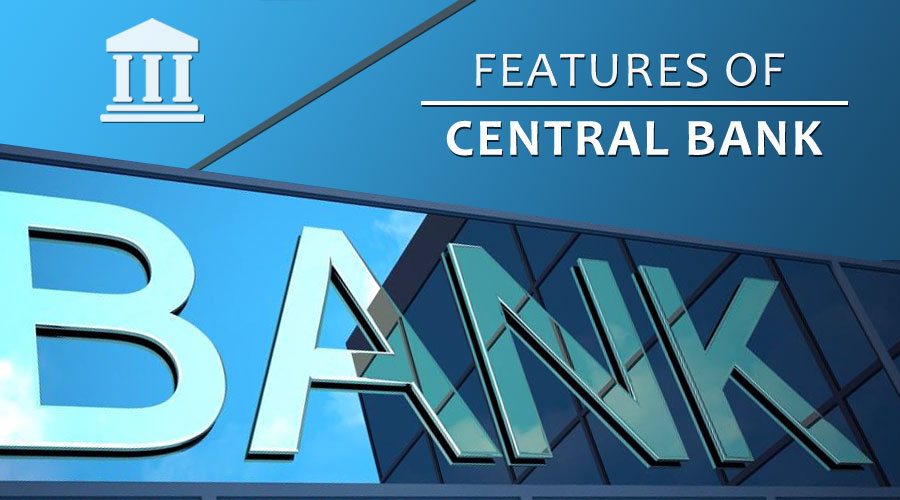
”A central bank being generally recognized as a bank which constitutes the apex of the monetary and banking structure of its country and which performs as best as it can, in the national economic interest.”
-- Prof. M. H. DE Kock
The significance of a central bank lies in its function of managing the monetary system of the country, internally as well as externally. By the nature of its business, the central bank is intimately connected with the banking system and money market of the country and can definitely regulate the monetary system of country in the general interest of the nation.
The Features of Central Bank:
The features or natures of central bank are as follows -
- Single Organization:
In a country there has only one central bank exist. In the world, there has been no existence of two or more central bank in any country. So central bank can be called as single organization. For this reason, it does not require to compete with other banks.
- Legal entity:
Central bank is established by the special act of Government. As a result, legal entity of central bank is much more strong than other banks. This strong legal entity gives special privilege to other banks.
- Nature ownership:
The ownership of central bank can be fully government or joint venture of government and private ownership. But the reality said that government owned central bank is maximum in the world.
- Difference in objective:
Because the operations of the central bank are such as profoundly to affect the monetary and credit situation, they cannot be undertaken solely for the purpose of making profit. The profit motive should only be a secondary consideration, and not the primary motive for central banking operations.
- Note issue:
The issue of note is the most important function of a central bank. In fact, the practical experience shown that the central bank is the most suitable and appropriate medium for the issue of note.
- Control:
In the present century, central bank has become as part of the economic set up in a country. All over the world, Central bank is under the control of government particularly it has been work under the direction of department of finance or treasury.
- Relation with Govt.:
The central bank is closely related to the government as its banker and the financial adviser. It is generally an organ of the government and performing the banking operations of government. Central bank represents the government not only in country but also the outside of the country as well.
- Guardian of the money market:
An effective monetary management requires a centralized country over both currency and credit. Being in close and intimate contact with the money market a central bank is in a position to know best when and to what extent to expand or to contract currency and credit to meet the changing requirements of the money market.
- Banker and controller of other banks:
The central bank functions as a banker’s bank. It also controls and regulates the cameral bank and other financial institutions. For effective control central bank prescribes different rules and regulations and it is mandatory to maintain these rules by other banks.
- Lender of the last Resort:
As a lender or the resort central bank provides rediscounts and advances to the commercial banks in times of credit stringency. It also gives loan to the govt. when requires.
- Controller of Foreign Exchange:
The central bank maintains the foreign exchange reserves of the country and attempts to stability in the exchange rates.
